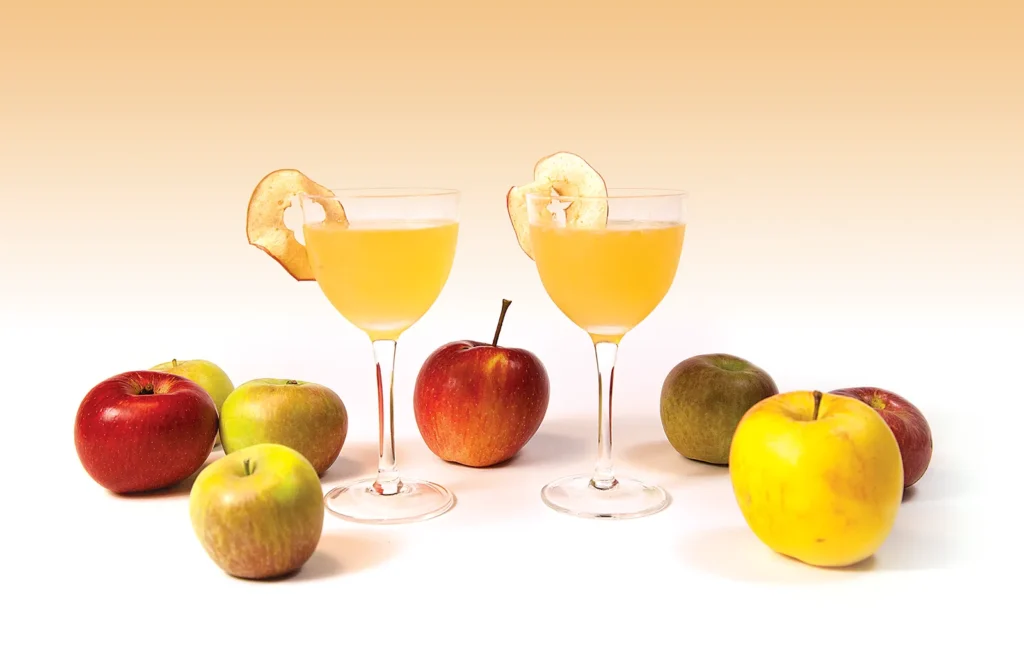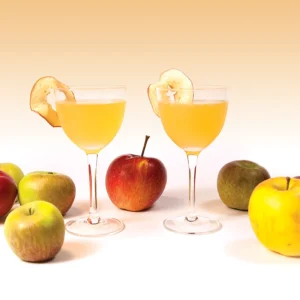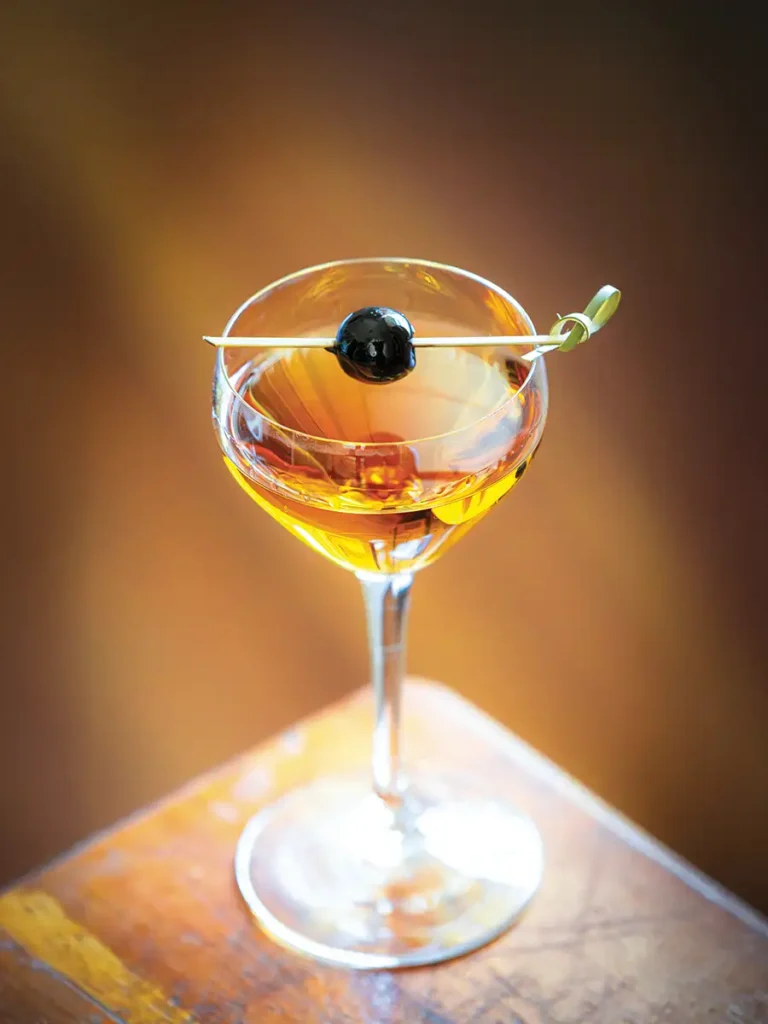Apple Ginegar
An Apple Acid Test

I’m not sure anyone celebrates autumn anymore by having their kids bob for apples, but that doesn’t keep apples out of my mind when it comes to fall delights. That’s even more true given we have the good fortune to have several apple trees in our yard, and therefore are ever on the lookout for ways to use the ones the birds and bugs don’t devour.
That’s how I discovered shrub, which had only been waiting around for a few centuries for “discovery” (actually, shrub might date all the way back to the Bible and Ruth—now that’s a heritage drink). Shrub is an acidulated beverage, so it’s worth concocting just to use the word acidulated. Throw together some fruit, vinegar and sugar and you’re in business— regular readers of this column might recall I’ve suggested plum shrub before. And while apples grow on trees, the term shrub comes from the Arabic word sharab meaning “to drink.”
Back in the American Colonial era, before refrigeration, shrub was a great way to preserve fruit. People got a bit silly with claims for how good it was for you, but while it might not be a miracle tonic, it’s certainly delicious. It’s also great to have on hand for nonalcoholic drinks that still seem festive—mix up an ounce of shrub, some tonic and a squeeze of lime and you’ve got a tasty pour suitable for all ages.
The Apple Ginegar Cocktail, though, was an adventure in bartending. I went in determined to savor delights that signaled fall, thinking the vanilla in bourbon would make for a hearty apple-pie-reminiscent pairing. Somehow that never quite worked, despite trying to work in sweet vermouth for length, or rum for depth and more seasonal good cheer. I promise cocktail taste testing isn’t always a series of inebriated joys—too often f lavors seem muddled or watered down, even when there’s no water added (beyond the ice that melts during shaking). There’s plenty of trial, disappointed face-making and error.
So I turned to gin, and not just because it’s my favorite spirit. Its clean lines tend to accent other flavors in the mix, plus the juniper notes, redolent of evergreen, always seem to suggest heading into winter. To help smooth out the sometimes-prickly zip of the shrub’s vinegar, there’s also some Lillet Blanc in the mix, which I like to think of as the place where vermouth and wine meet—a teensy bit sweet, but then spicy and herbal too. Of course it’s often paired with gin in classics like a Corpse Reviver #2 or a Vesper. So that means it works here and you will find plenty of uses for that bottle you purchase (just keep it refrigerated after opening, as it’s more like a wine than you think). That little bit of Meyer lemon juice adds a sweet-tart to the puckering-tart of the shrub, so don’t forget it.
For garnish, you can certainly buy apple rings, but storebought tend to be a bit rubbery, and their weight makes them unstable on the glass rim. To step up your game a notch, take another one of those Gravensteins and slice it, top to bottom, in cardstock thick slices with a mandoline or a very sharp knife and remove the core.
Put them on a Silpat on a baking tray in a preheated 300° oven. Turn the oven off. Give the slices about 30 minutes so they dry out but do not get very brown. (You can do a quick brush with some lemon juice if you want to be sure to prevent browning and to add a bit more flavor.)
These will last you for a week if you keep them in a lidded container and can keep yourself from snacking on them. When it’s time to add them to the drink, make a cut so you can slip them on the rim; they will still be tasty if they wind up in the glass.







